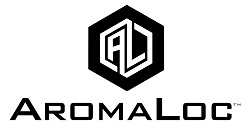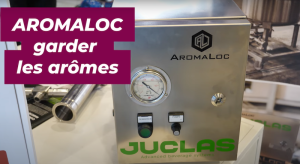Réussir Vigne is a leading French wine industry journal. In a recent article written by Xavier Delbecque, AromaLoc and its technology are featured. For those of you fluent in French, simple click on the Réussir Vigne logo above to read the original article.
For everyone else, we happily provide a translation below.
AROMALOC PRESERVES FERMENTING AROMAS (August 25, 2020)
After long years of development, AromaLoc Inc. has launched a system that prevents the escape of volatile aromatics as CO2 is released during fermentation.
To avoid the loss of volatile aromas during fermentation — this has been the goal of Professor Dick Jones’s work the last 10 years. Reussir Vigne first covered the AromaLoc story in 2016 (issue no. 232, September, 2016). Four years later, the process has been further developed and commercialized. The ingenious idea of this experienced professor is to deploy a membrane to filter gas in the fermentation tank to ensure only the CO2 escapes. The aromatic molecules are larger and are therefore kept in the tank.
“The traditional escape of aromatics from the tank can reach 50 percent, and decrease the quality of the final wine,” observes Dick Jones.
A method that is non-invasive, easy to use, and inexpensive
In other words, the AromaLoc system captures the aromatics and returns them to the headspace. This serves not only to conserve them, but also to maintain an important concentration at the top of the tank, eliminating the evaporation of the new gasses.
“We researched and developed a non-invasive method that doesn’t disturb the fermentation process, one that is easy to use, inexpensive, and energy efficient,” explains the American professor.
The AromaLoc machine itself is a [stainless steel] box weighing 9 kg, measuring 30 cm on each side, using 12 V power, and is connected to the top of the tank. The system begins to operate at the top of the CO2 curve, and continues all the way to the end of alcohol fermentation. The current machine can be scaled for use with tanks up to 50 hl in volume.
The wines treated in this manner are judged fruitier, with better mouthfeel and more agreeable taste
Analyses of these wines done through chromatographic gas phases (mass spectrometry) show an increase in the concentration of aromatic molecules in AromaLoc-treated batches, in particular, the ethyls and ester acetates generally tied to a wine’s fruity character. The fusel alcohols responsible for bad taste are themselves less well preserved, which explains tasters’ judgement that AromaLoc-treated wines are fruitier, but also more agreeable, and have better mouthfeel.
Besides the United States, new trials are taking place this year in Germany and Canada. The AromaLoc system is not yet distributed in France, but the company is interested in working with an importer, or directly with French producers who would like to test the AromaLoc process.
“We would be very happy to collaborate with French technical institutes interested in our technology,” says the AromaLoc CEO.
— Xavier Delbecque




